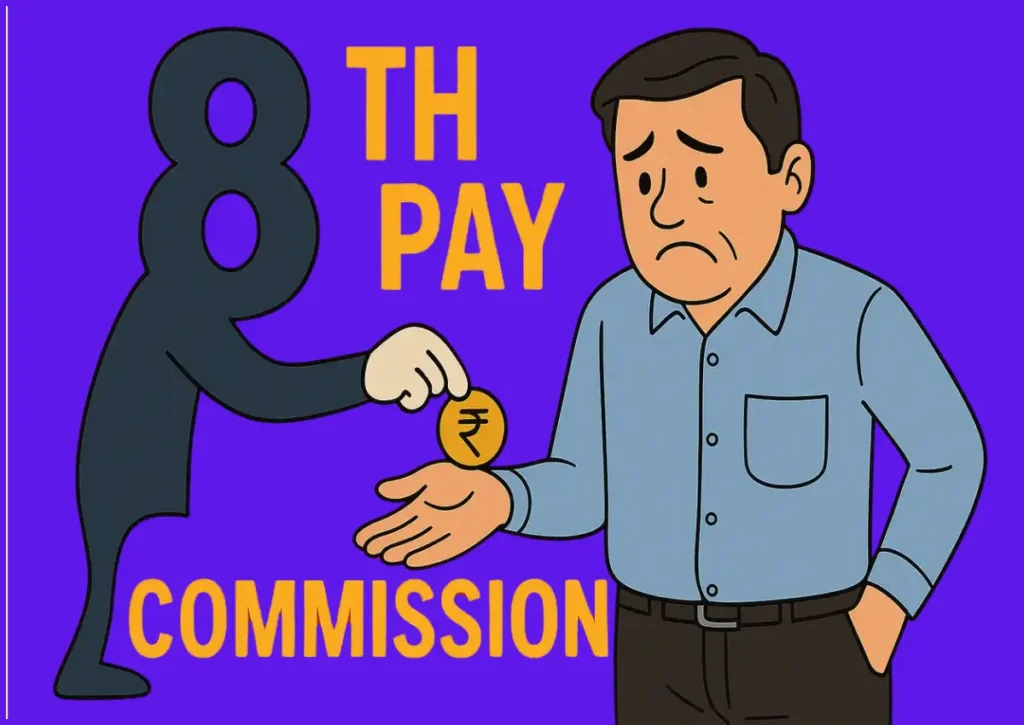A recent report by Kotak Institutional Equities has hinted at a possible fitment factor of 1.8 under the proposed 8th Central Pay Commission, suggesting that central government employees could see a real pay increase of around 13% if the recommendations are implemented.
The report has sparked renewed discussion in policy circles, especially as the Seventh Pay Commission completed its cycle in January 2026, prompting the need for a fresh framework to revise salaries, allowances, and pensions for nearly 50 lakh central government employees and over 60 lakh pensioners across India.

The fitment factor is a key multiplier used to calculate the basic pay of government employees in revised pay structures. If a fitment factor of 1.8 is approved, it means that an employee’s existing basic salary would be multiplied by 1.8 to arrive at the new salary. This could effectively raise take-home salaries and boost household incomes, especially for employees in lower and middle-level service brackets.
In comparison, the 7th Pay Commission had recommended a fitment factor of 2.57, which led to an average pay hike of over 23%. However, experts believe that economic constraints and inflationary concerns may result in a more conservative figure this time.
Kotak’s report also suggests that a 13% real pay increase would have both fiscal and economic implications. On the one hand, it would place additional pressure on the central exchequer—especially if replicated by state governments—but on the other, it could boost consumer demand, particularly in urban and semi-urban markets.
Economists have pointed out that implementing a revised pay commission typically contributes to short-term consumption-led growth. “The timing of the 8th Pay Commission will be crucial,” said a senior policy analyst, referring to India’s current focus on fiscal consolidation post-COVID and rising public sector capex.
The central government has not yet officially confirmed the formation of the 8th Pay Commission, but mounting expectations and financial modeling by leading institutions like Kotak suggest that early planning may already be underway behind closed doors. If historical timelines are followed, the 8th CPC could be constituted by mid-2026, with recommendations expected in 2027 and rollout by 2028.
The 13% pay hike projection assumes moderate inflation adjustments and is seen as a realistic estimate in the current macroeconomic scenario. The report also cautions that while the hike may boost morale and financial stability among employees, it could widen fiscal deficits unless offset by corresponding revenue growth.
In the private sector, industry leaders are watching closely, as past pay commission revisions have often led to salary realignments in public sector undertakings and influenced broader labor market trends.
Meanwhile, employee unions have welcomed the idea of a fitment factor hike but have demanded a higher multiplier. Some union representatives argue that a 1.8 fitment factor may not be sufficient to account for inflation and increased cost of living over the past decade.
They are reportedly lobbying for a minimum fitment factor of 2.5, along with higher dearness allowance and grade pay adjustments. The All India Central Government Employees Federation (AICGEF) recently stated, “The last ten years have seen rising costs in housing, education, and healthcare. Employees expect the government to recognize these real hardships in the next commission.”
If the government considers a higher fitment factor in the final report, the resulting impact on the national budget would be significantly greater than Kotak’s current estimates. For reference, implementation of the 7th Pay Commission in 2016 led to an additional outlay of nearly ₹1 lakh crore per year.
Some financial experts suggest that rather than waiting for a full commission every 10 years, the government should consider smaller, more frequent salary revisions tied to inflation indices and economic growth rates. This approach, they argue, would better reflect dynamic cost-of-living changes without triggering massive fiscal disruptions every decade.
As of now, the Ministry of Finance has not made any official statement regarding the formation or timeline of the 8th Pay Commission. However, given the growing anticipation and expert assessments such as Kotak’s, clarity may emerge within the next fiscal cycle.
For now, the report has set off a wave of speculation among government employees, economists, and policymakers. If the Kotak projection holds true, it may mark a more balanced approach to salary revision—one that attempts to reward service without overextending the fiscal framework.









